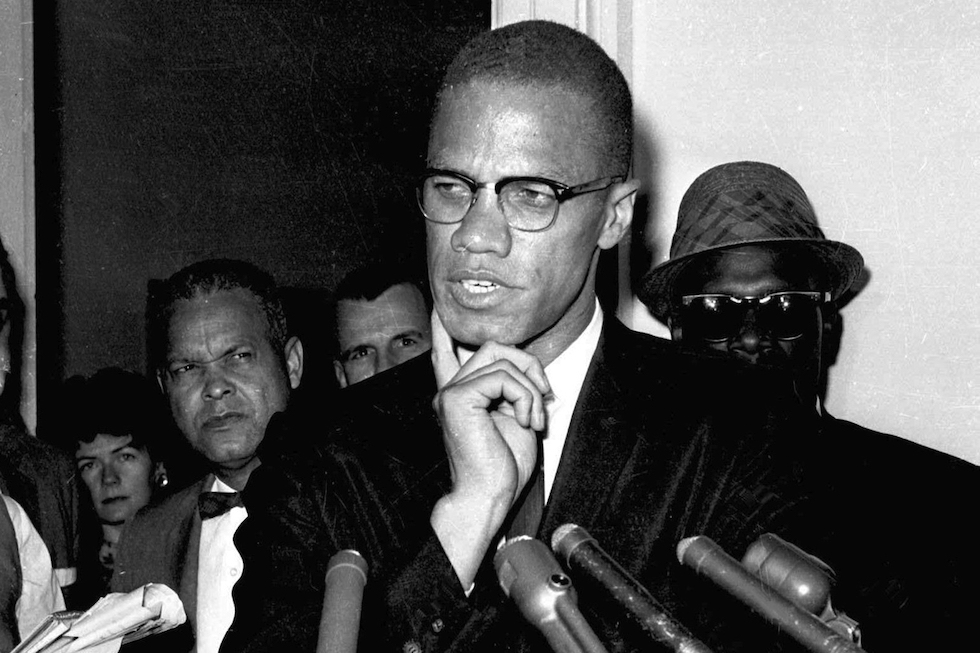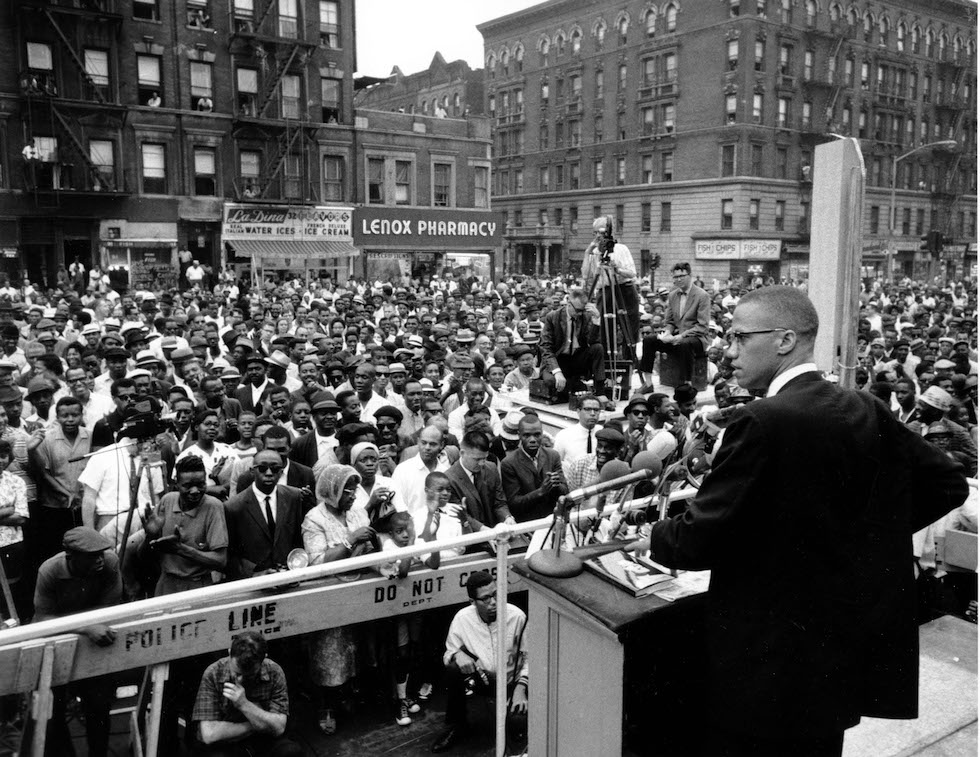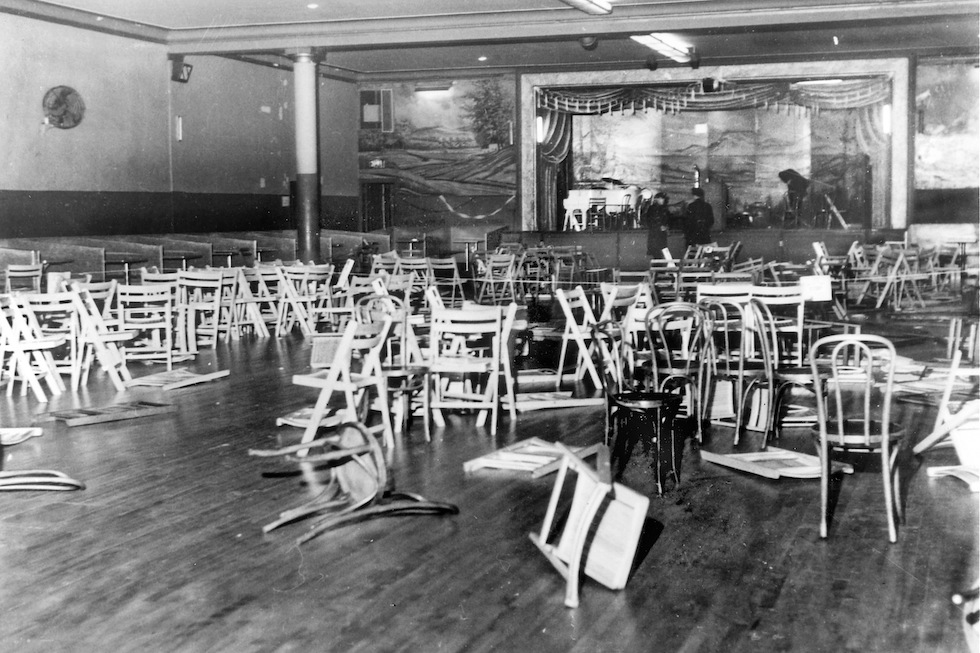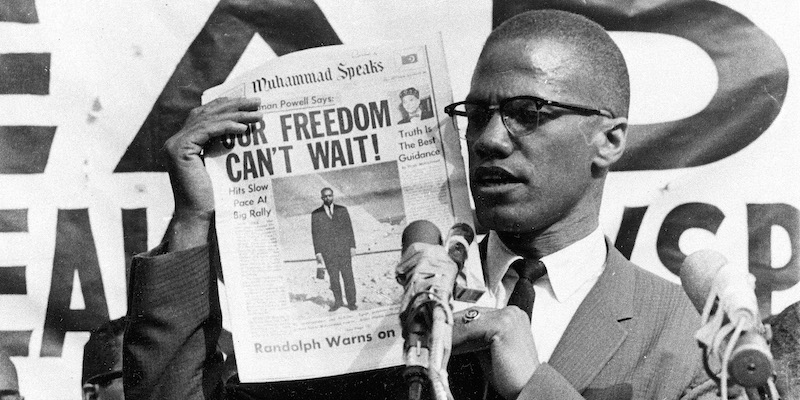On Tuesday, on the 58th anniversary of the assassination of American civil rights activist Malcolm X, one of his daughters announced plans to sue the FBI (the US federal police investigative agency), the CIA (the intelligence agency) and to the New York police accusing them of being responsible for his murder, carried out on February 21, 1965 in Harlem. In a press conference Ilyasah Shabazz, daughter of Malcolm X and Betty Shabazz, he accused officials of the local police and federal agencies that they withheld evidence that they say would prove their involvement in an alleged plot planned and carried out to kill their father.
Malcolm X is considered one of the most important figures in post-World War II United States history and one of the most important exponents of the African-American civil rights movement together with Martin Luther King. He was killed by militants of a religious group of which he too had belonged, while he was about to give a speech: however, there had been doubts about the exact circumstances of his murder for some time.
“For years our family has fought to get the truth about his murder out,” said Shabazz, who was two years old at the time of his father’s death. The lawyer who is assisting her, Benjamin Crump, clarified that Malcolm X’s family intends to seek damages estimated at 100 million dollars (about 94 million euros) on the basis of new information that has recently emerged: «It is not something that it affects only who pulled the trigger, but also those who plotted to carry out this dastardly deed,” said Crump.
The New York Police Department has made it known that it does not want to comment on ongoing trials, while at the moment the CIA and FBI have not commented.
Ilyasah Shabazz during Tuesday’s press conference next to lawyer Benjamin Crump (AP Photo/ Seth Wenig)
Who was Malcolm X
Malcolm X’s real name was Malcolm Little: he was born in 1925 and had a very complicated childhood. His father was killed when he was six years old and a short time later his mother was hospitalized in a psychiatric clinic. At twenty-one he was arrested for some burglaries and sentenced to eight years in prison. Once out of prison he decided to eliminate his surname because, he claimed, it was a legacy of slavery.
It was in the Charlestown prison, near Boston, that Malcolm X met the Islamic Nation, a controversial group of black supremacists who preached the emancipation of African-American people through an original interpretation of the Islamic religion. After converting to the Islamic Nation’s version of Islam, Malcolm X spent most of his time in prison reading books and studying. When he was released from prison in 1952, he became an important member of the organization and one of its religious leaders, beginning his militant commitment to civil rights.
Throughout the following decade Malcolm X was invited on various occasions on radio and television, and his statements often ended up published in newspapers. In 1964, however, he broke off relations with the Islamic nation due to some tensions with the leader of the organization, Elijah Muhammad. He began a long journey to various countries of the world and returned to the United States in February 1965, shortly before his death.
His murder and investigation
Malcolm X was killed as he was about to give a speech in front of four hundred people at the Audubon Ballroom in New York, a dance hall in the Harlem neighborhood where he had already held rallies in the past. Before he could begin, a man threw a rudimentary smoke bomb towards the stage, where he had already mounted. Two security men approached to understand what was happening; Malcolm X raised his arms and backed away. At that point, another man came on stage and shot him in the chest, knocking him to the floor; two others approached the sides of the stage and shot him in the legs, while an undercover NYPD officer tried to rescue him.
Malcolm X was shot and killed at age 39 in front of his pregnant wife Betty Shabazz and three of his daughters.

Malcolm X talks to some reporters in Washington in May 1963 (AP Photo/ File)
It had been quite easy for the killers to enter the hall with weapons because Malcolm X had ordered his men not to carry weapons with them and not to frisk people who attended his events so as not to discourage them from attending. Two attackers managed to escape, while one of his bodyguards shot a third, Thomas Hagan (also known as Mujahid Abdul Halim or Talmadge Hayer), who was immediately arrested and imprisoned.
His killers were identified as members of the Islamic Nation, the group of which Malcolm X had belonged until the previous year. Within about ten days, Khalil Islam, former driver of Malcolm X, and Muhammad A. Aziz were also arrested and accused of being the material authors of the murder. On March 11, 1966, all three were convicted and sentenced to prison.
Ten eyewitnesses reported seeing Islam, Aziz, or both at the time of the assassination, but their statements were contradictory and there was no physical evidence linking Aziz and Islam to the murder or the crime scene. Both presented credible alibis, supported by the testimony of their family and friends. Hagan later confessed, and said the other two were innocent; in 1977 he named four other men he claimed had acted with him, two who shot and two accomplices in the room, but his statements led nowhere.

Malcolm X during a rally in Harlem, New York, in June 1963 (AP Photo)
The doubts, the investigation and the acquittals
Like many civil rights activists and organizations, Malcolm X was been under close surveillance for some time local police and the federal government, who saw him as a possible threat. It is also for this reason that over time various theories spread about his assassination, including the one according to which the FBI and the New York police were involved in his death on the basis of the fact that they considered him an activist with radical visions and therefore dangerous. Then there are historians and activists who argue that the police and intelligence agencies didn’t even have to create the conditions for his assassination because in a sense Malcolm X had already gotten himself into trouble.
To give a few examples, on June 6, 1964, then FBI Director J. Edgar Hoover sent a telegram to the agency’s New York office urging its agents to “do something about Malcolm X.” At the same time, several officers from a special unit of the NYPD had infiltrated some political organizations, including his own group. Just a week before the assassination, his home in Queens was firebombed while he, his wife, and their four children slept, but no one was charged in the attack.
For these reasons, there had long been various pressures for the investigation into the murder to be reopened. Some historians and activists argued that the police were aware that Malcolm X was in danger, and that they decided not to intervene because their ultimate goal was to intimidate and discredit him; others instead had suggested that the refusal to open new investigations was a sign that the police had played a central role in the murder.
Hagan was eventually released on parole in 2010, after spending nearly 45 years in prison. In 2021, 55 years after their conviction, Aziz and Islam were instead exonerated thanks to a two-year investigation launched following the publication of a documentary and a new biography on Malcolm X in which new hypotheses emerged.

The room where Malcolm X was killed photographed after police inspections (AP Photo/ Al Burleigh, File)
Reconstructing the circumstances of the murder was particularly difficult because many people involved in the case, including witnesses, investigators or other potential suspects, had long since died. Some documents had also been lost, and physical evidence, such as the weapons used in the shooting, was no longer available. However, the investigation found that prosecutors at the time, the FBI and the New York Police Department had withheld critical evidence that would likely lead to the acquittal of Aziz and Islam.
However, various unclear issues emerged from the investigations, such as the fact that on the morning of the murder a reporter from the New York Daily News had received a call in which it was revealed that Malcolm X would be killed that day. The investigation did not specify who might be responsible for Malcolm X’s death and did not confirm any police or government involvement or conspiracy in the murder. However, it left open many questions, such as how and why the police and the government failed to prevent what happened.
Aziz was released on probation in 1985 and Islam in 1987. When they were cleared, the former was 83 years old, while the latter had already been dead for over a decade. Last October Aziz and Islam’s family were compensated with 36 million dollars by the city of New York for wrongful conviction.
